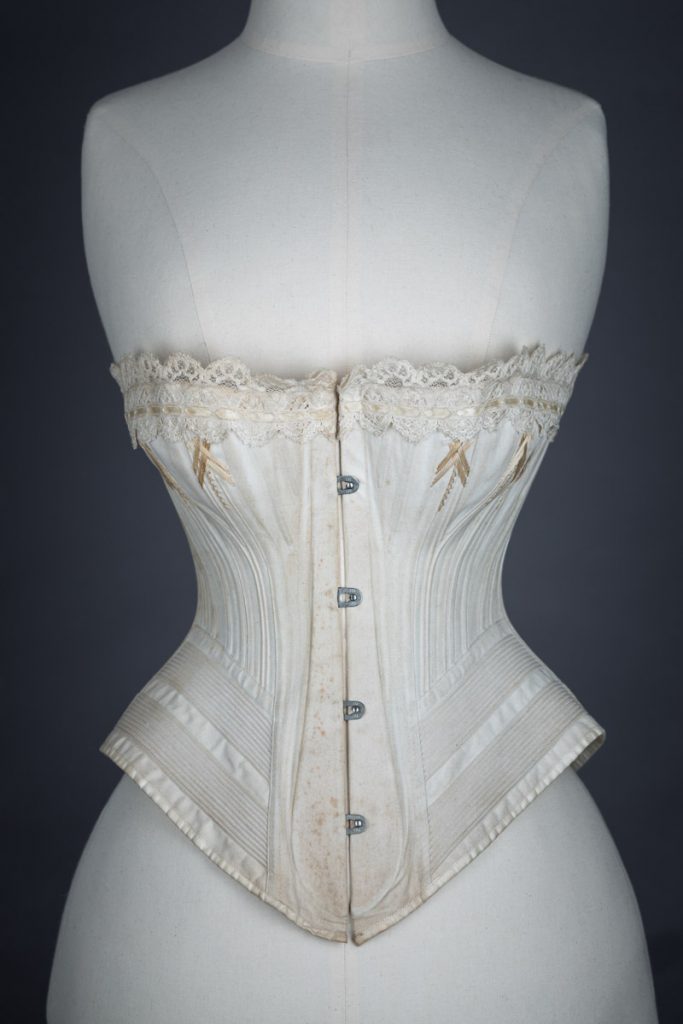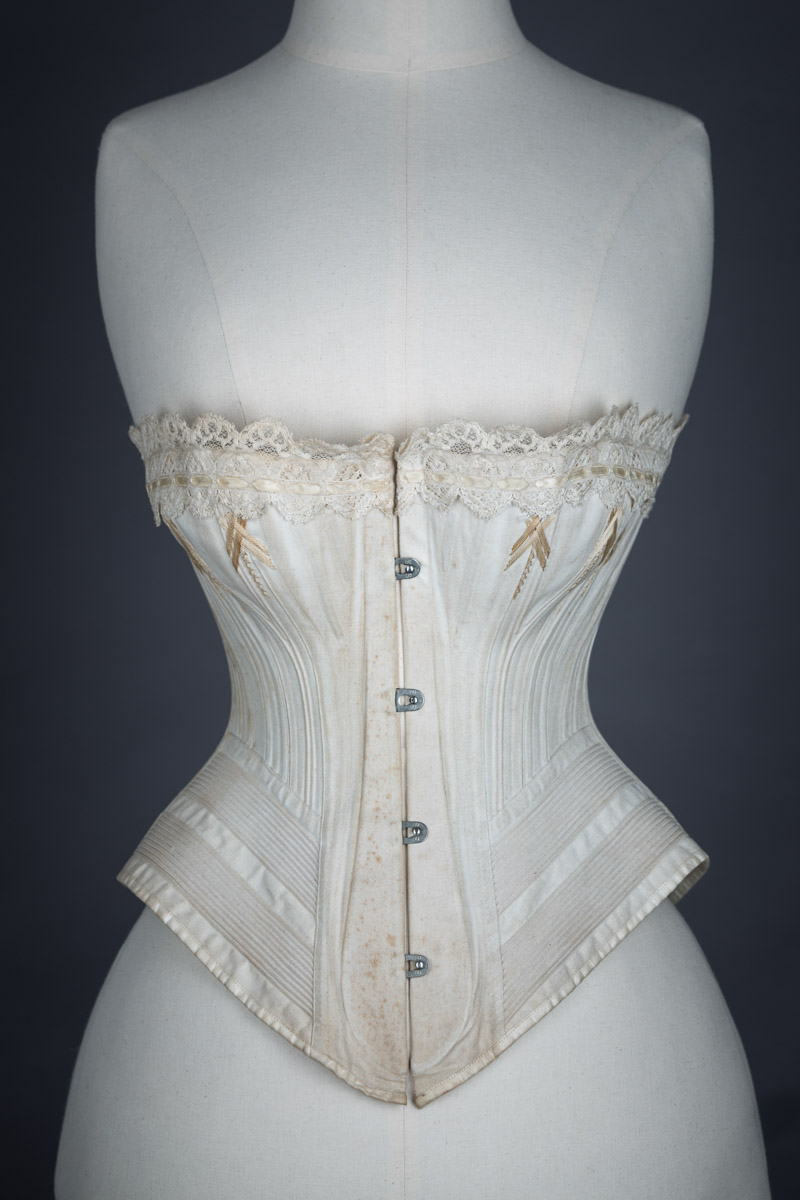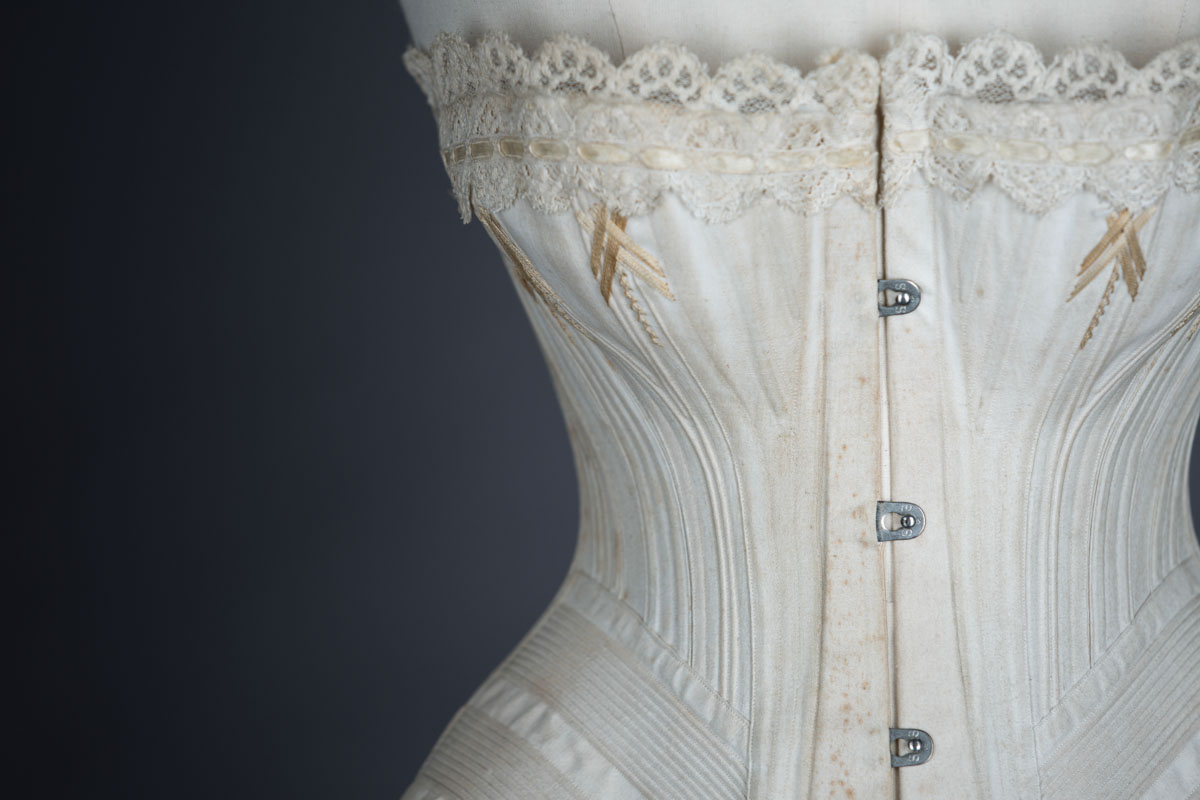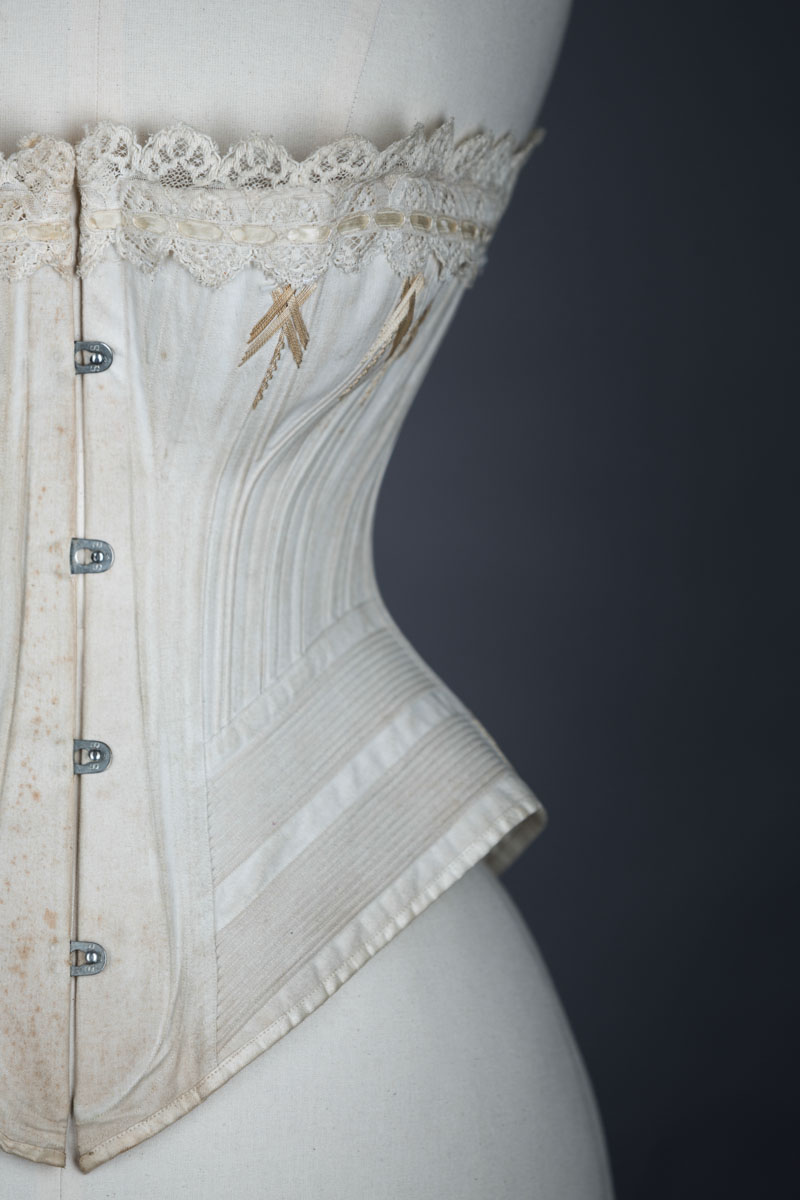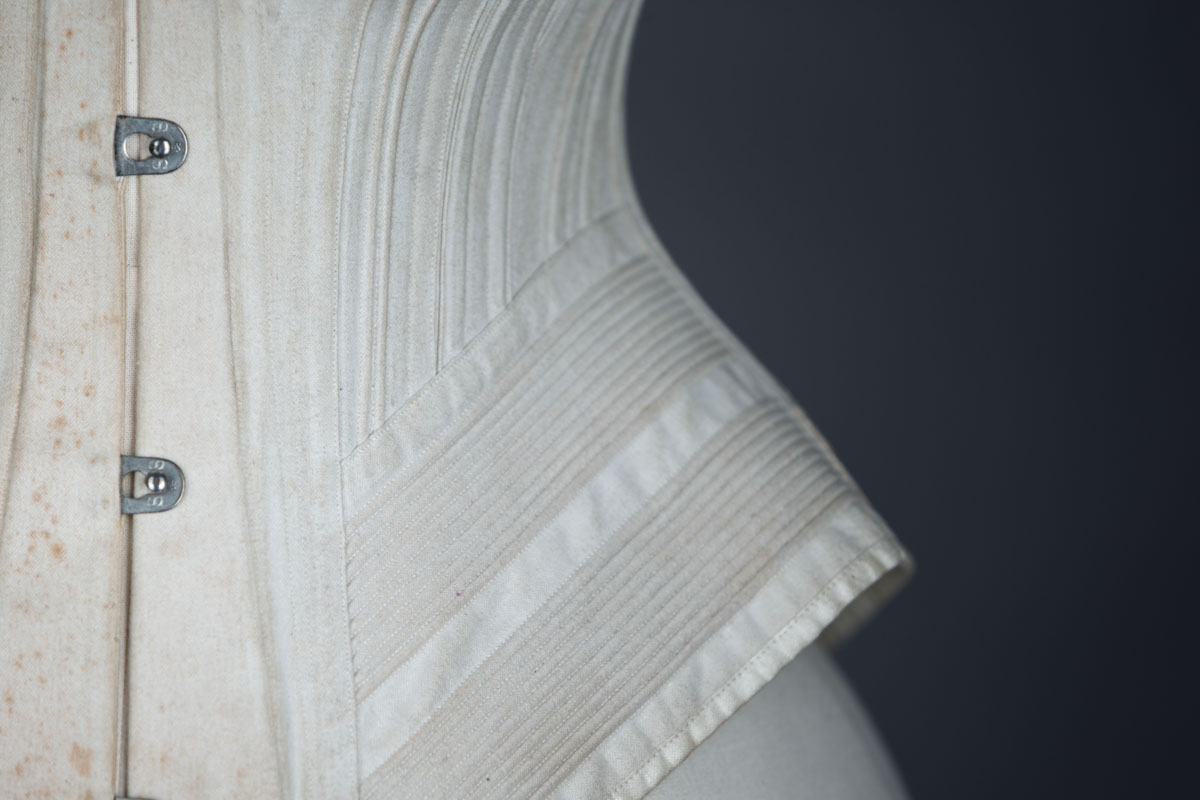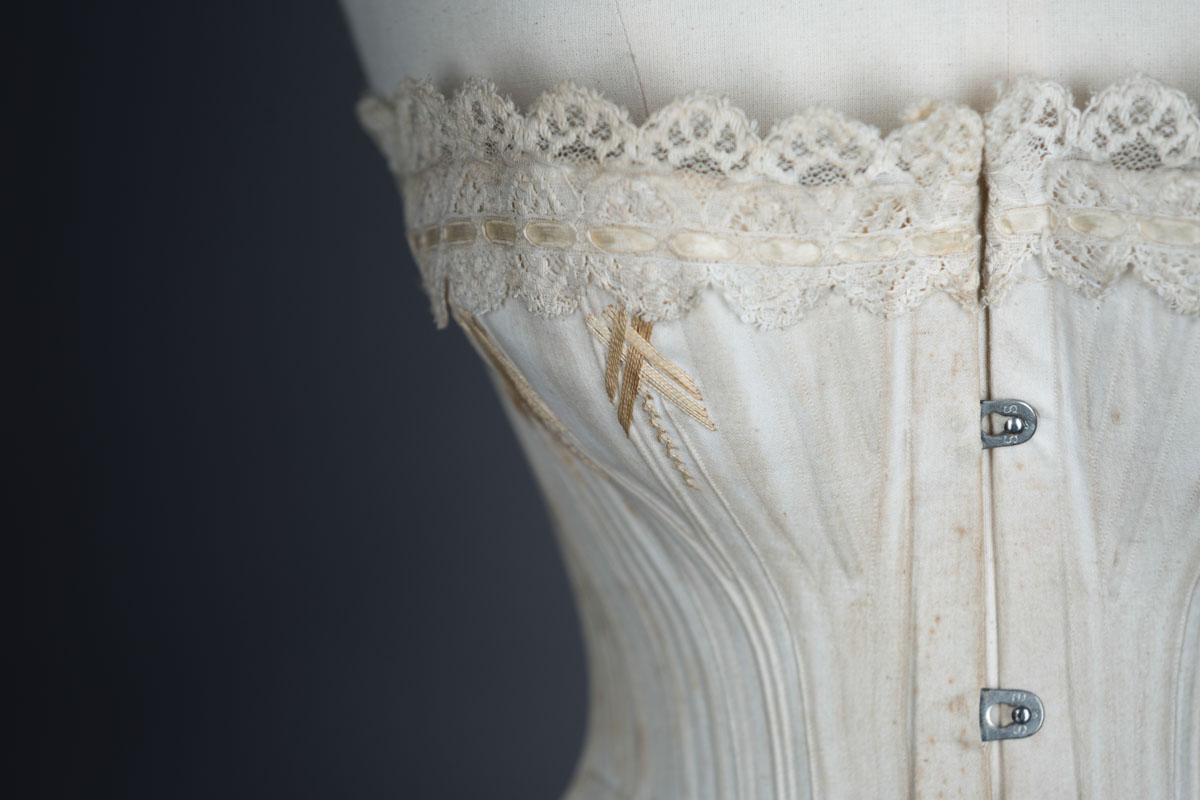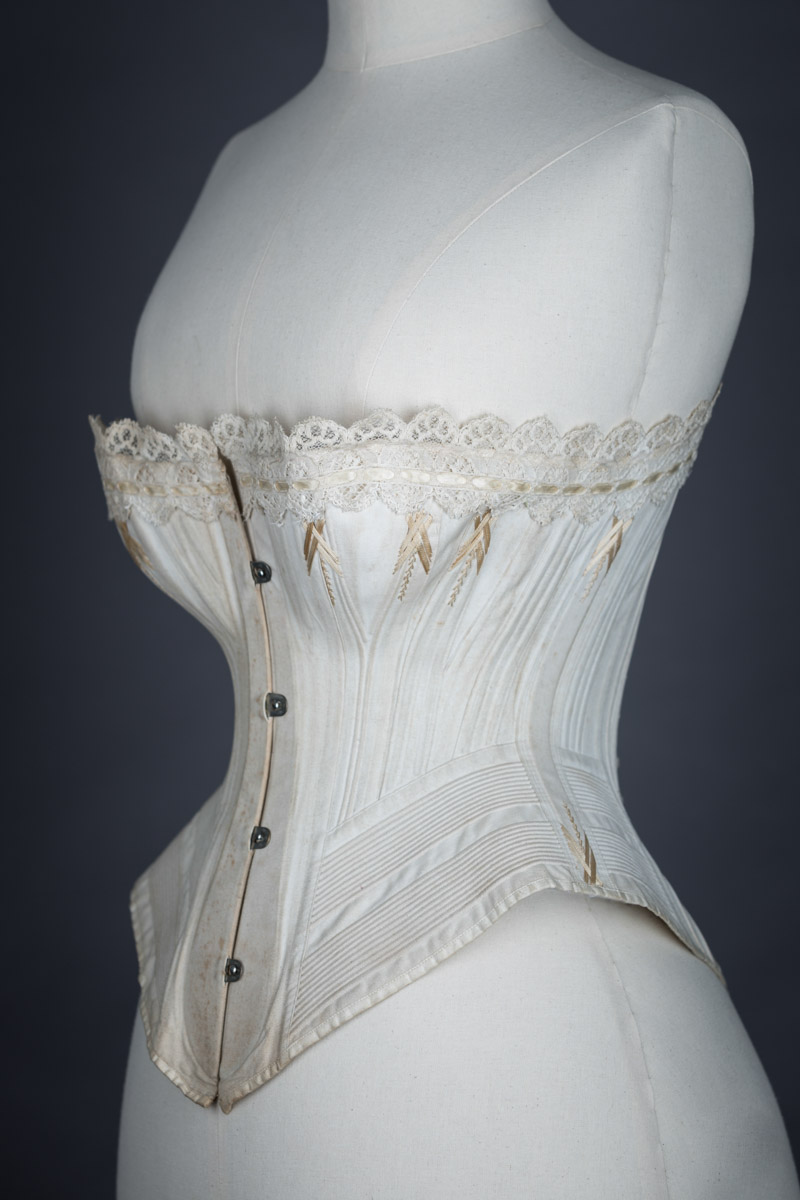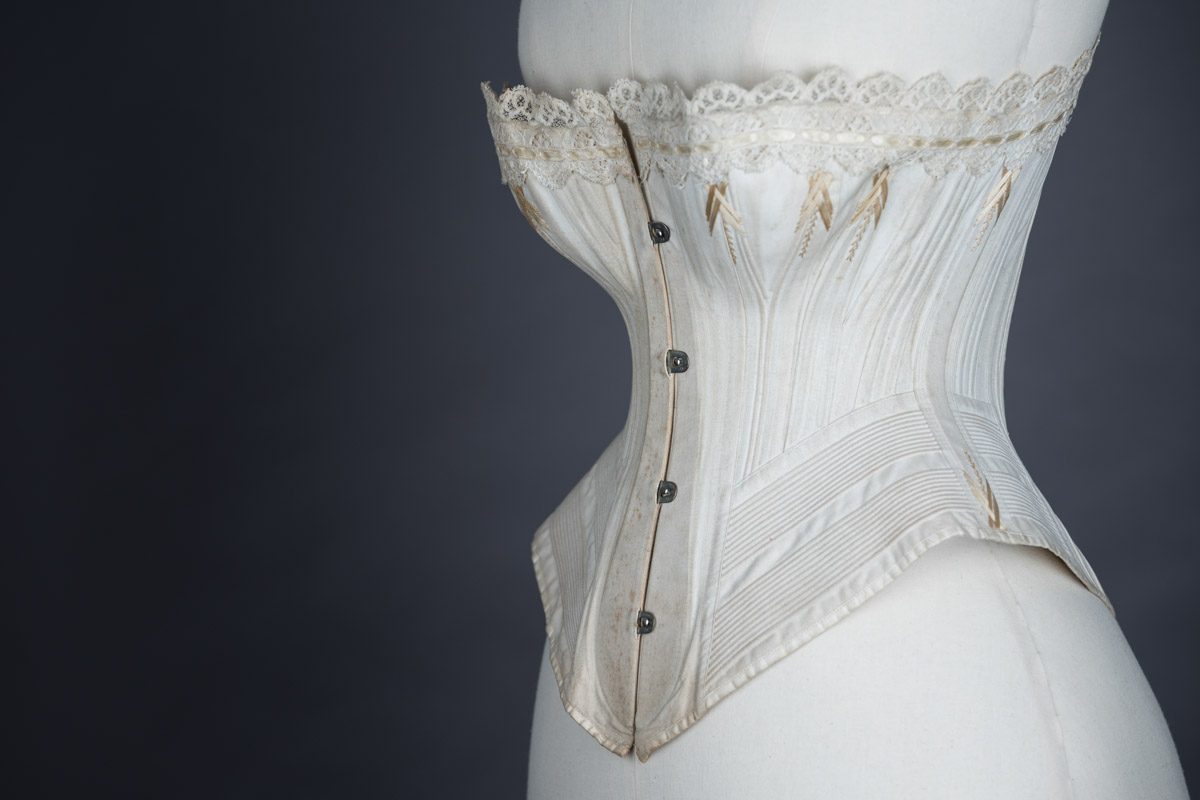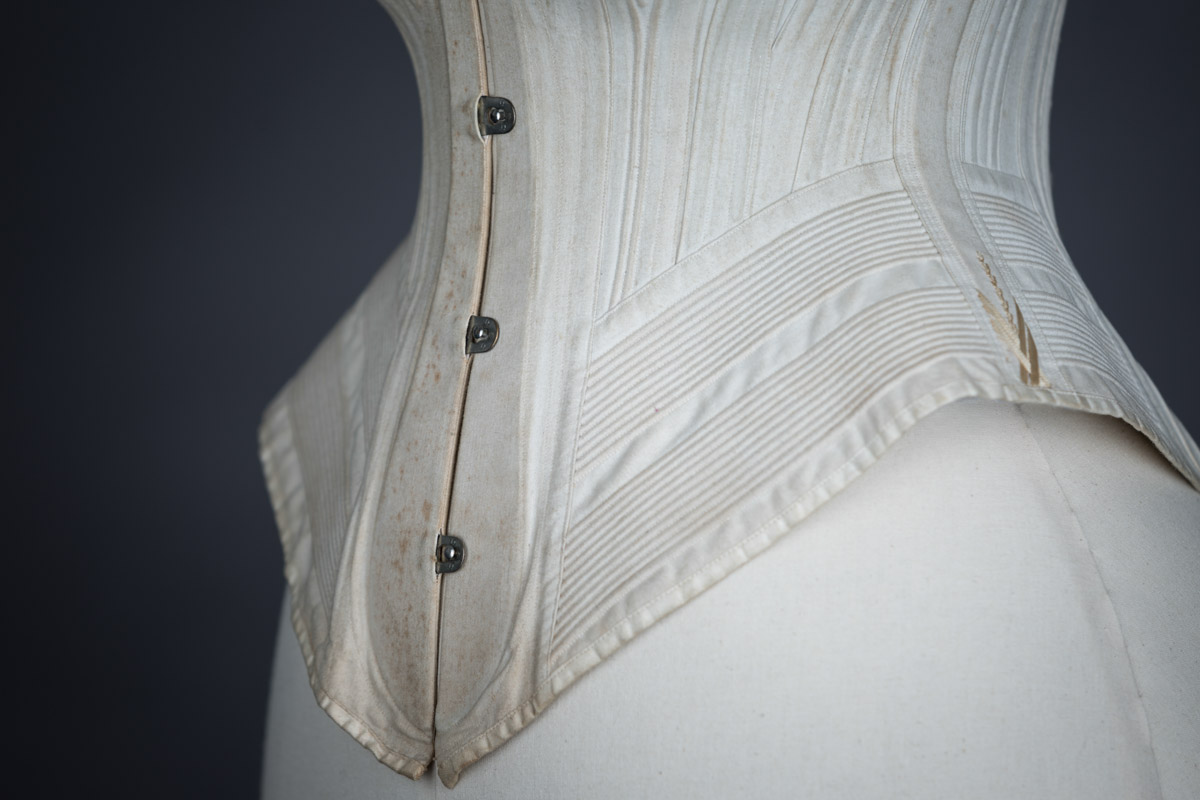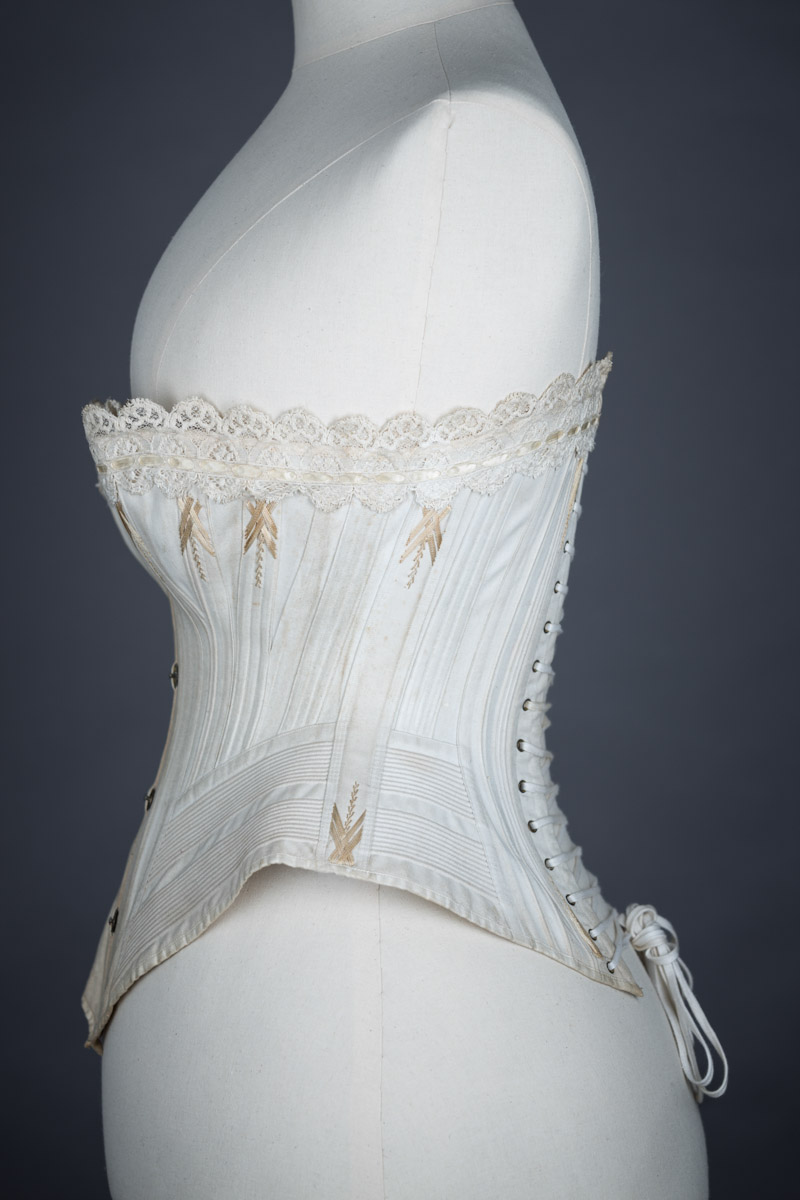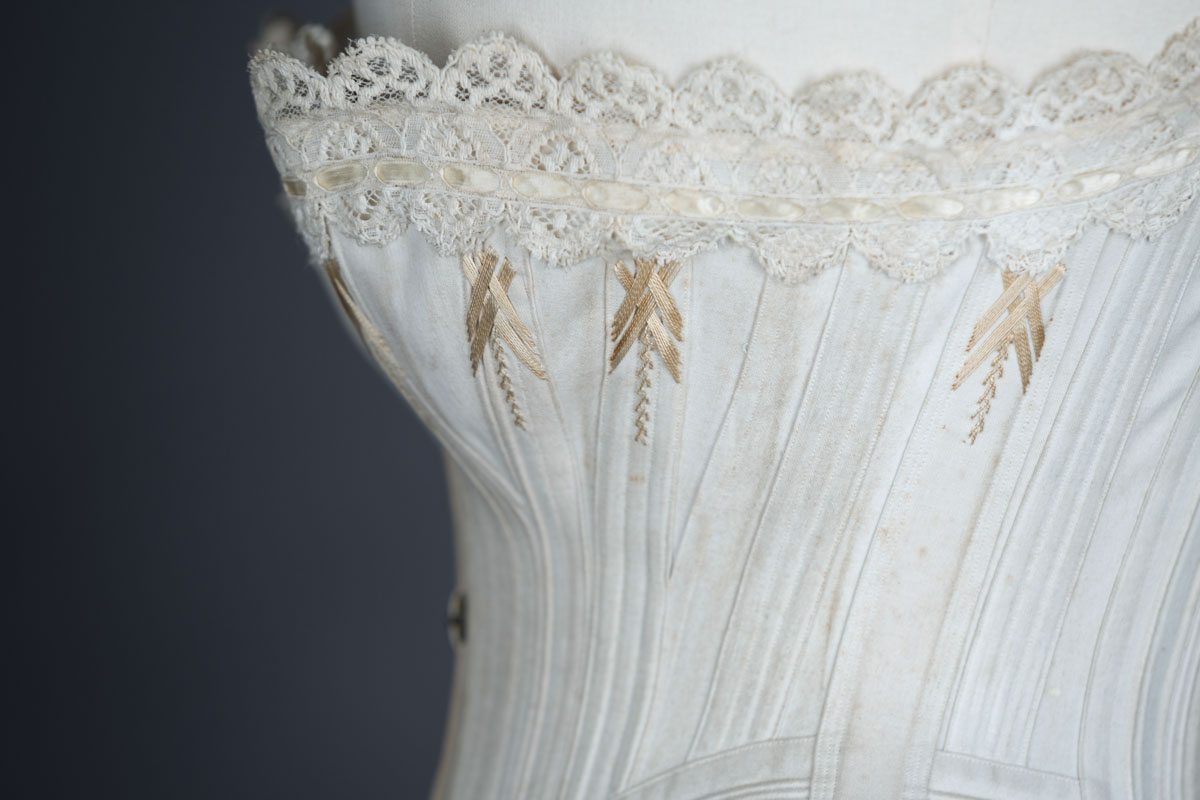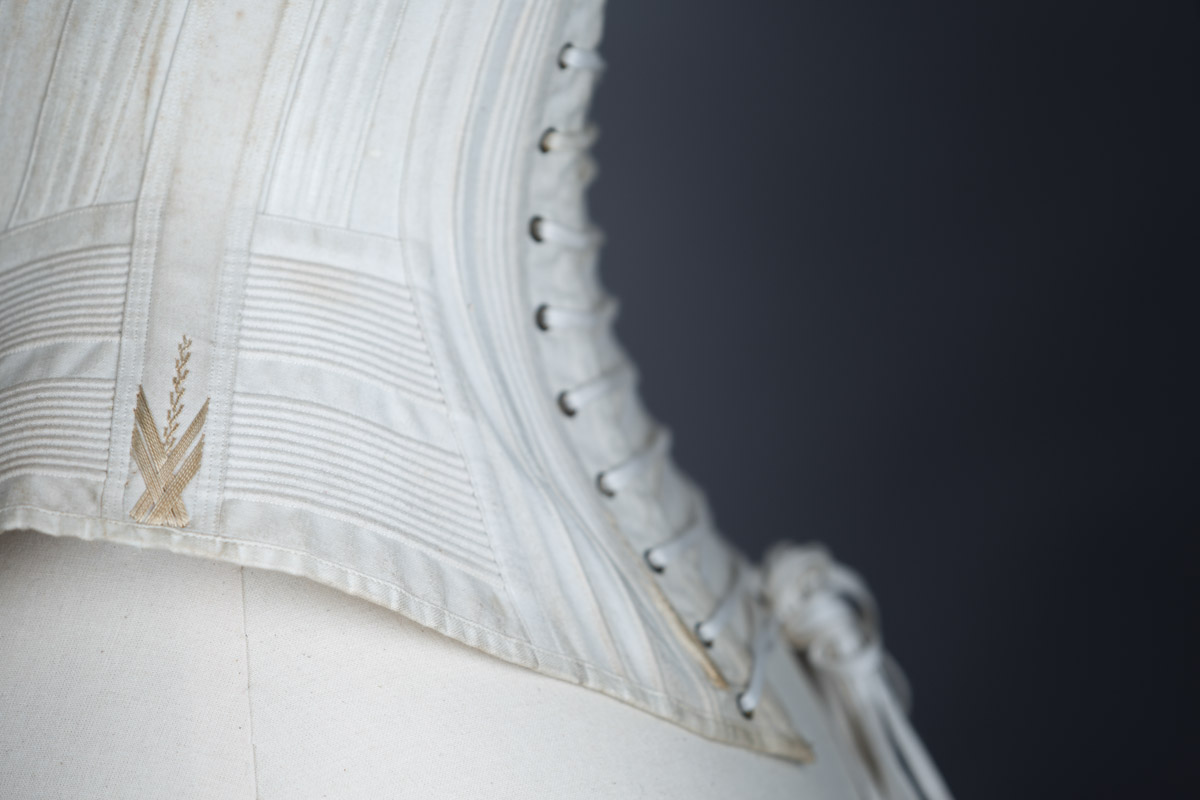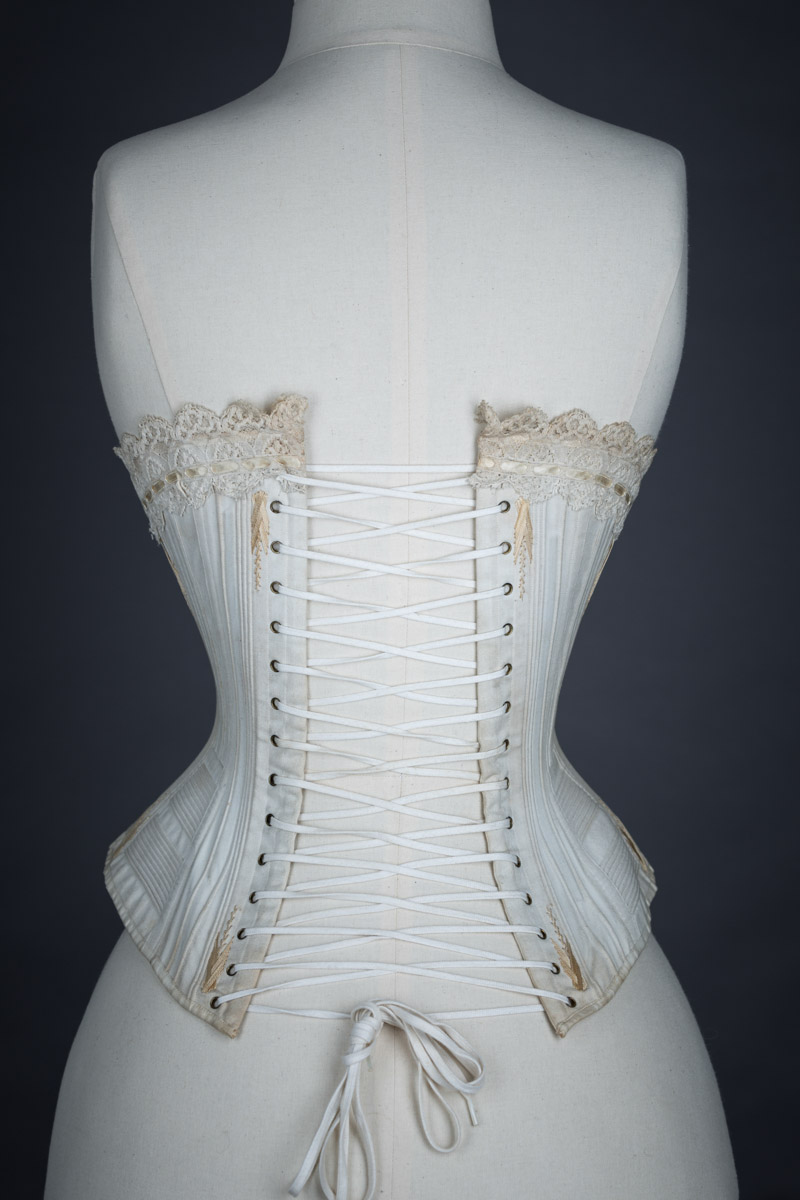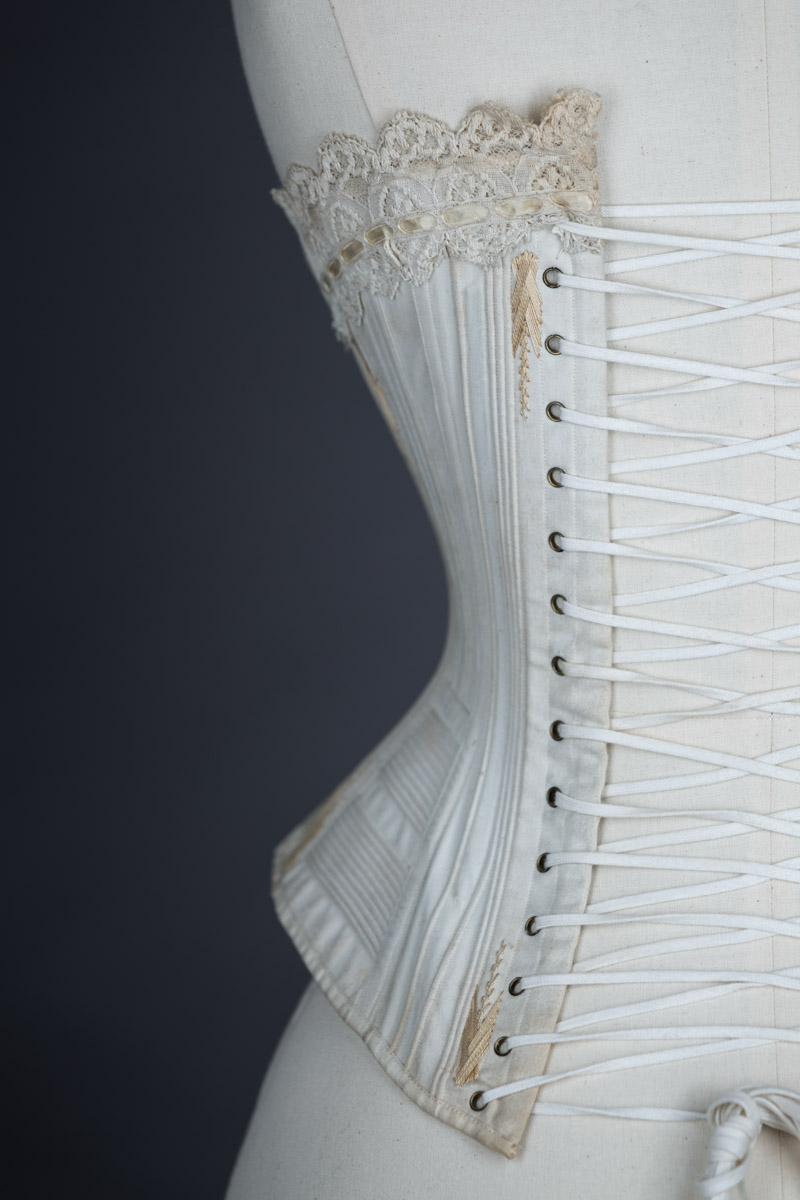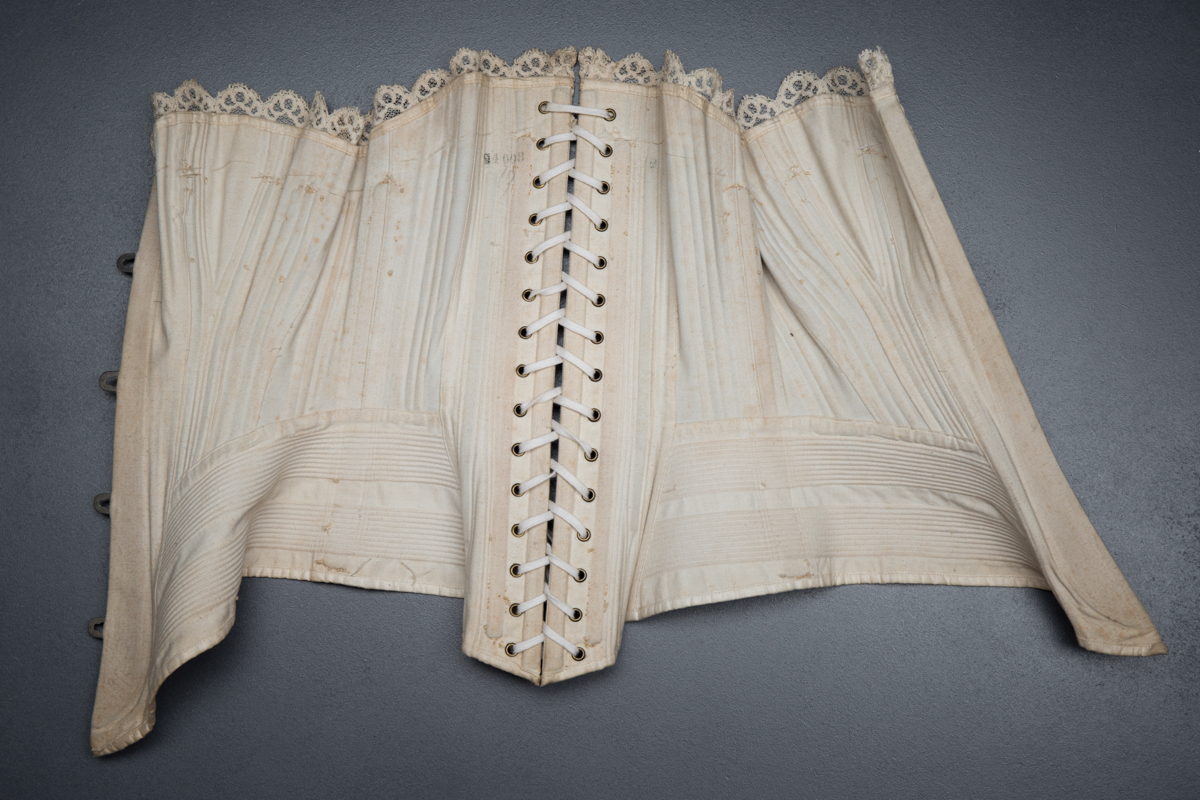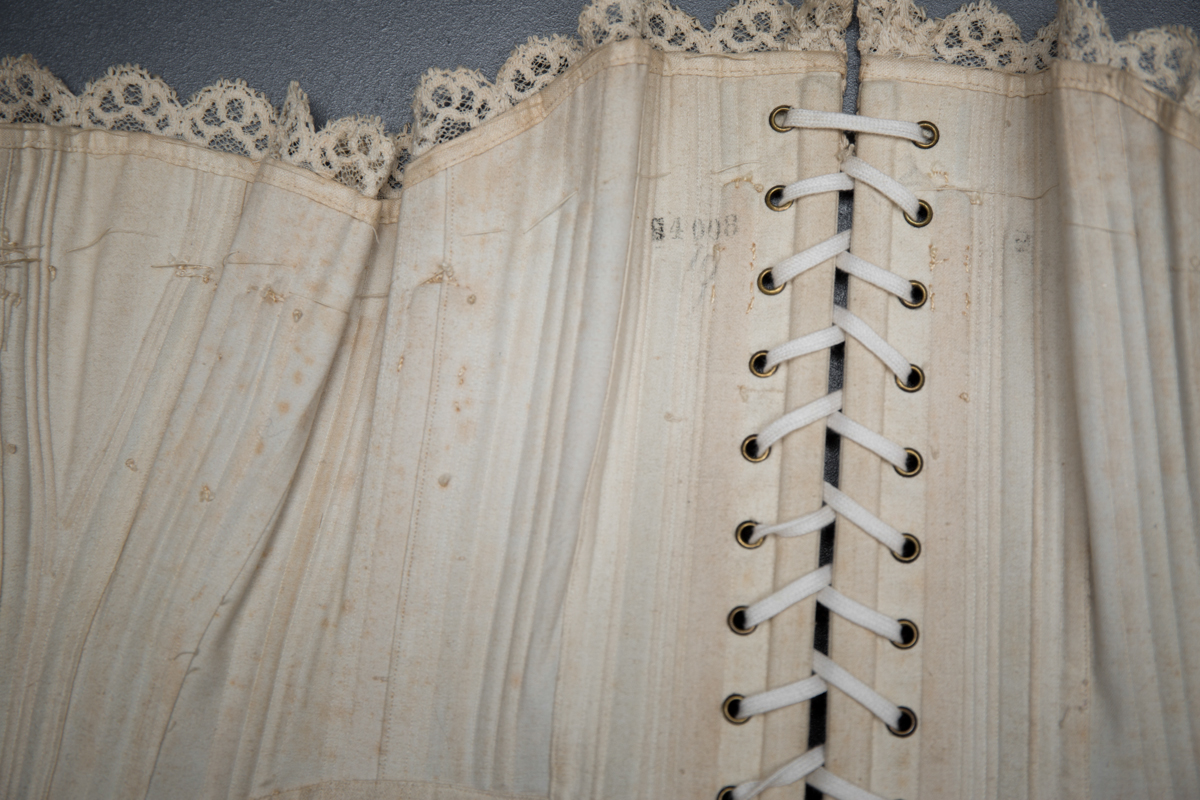Date: c. late 1880s
Origin: Great Britain
Fabric: Cotton
Brand: S&S
This lightweight yet very curvy corset is constructed from two layers of cream herringbone cotton coutil, and uses a variety of method to maintain its shape and supportive structures. Most support structures are encased within the two layers of fabric.
There are three steel bones on each side of the garment: 8mm width bones either side of the eyelet channels at the centre back, and a wide curved 15mm bone on the side of the corset encased in an overlaid coutil channel. All other vertical bone channels contain pieces of baleen, with approximately 15 pieces per side. Some narrower vertical channels are also filled with cord and echo the hip motifs. The corset is constructed with a majority of vertically seamed panels, with a separate hip panel which is profusely corded for structure. A number of the vertical bone channels have been embroidered with decorative and functional flossing designs to secure the bones, in a contrasting yellow embroidery thread.
The corset fastens at the centre front with a spoon busk with 4 loops and pins. The spoon busk is a typical feature of 1880s corsetry, offering a rounded and supportive shape to the abdomen. The busk widens towards the bottom and slightly curves inwards. Each busk loop is engraved with ‘S&S’, the manufacturer name. Another corset by this manufacturer can be found here, but there does not appear to be much other information about them available.
The corset opens at the centre back with lacing through single part eyelets. Unfortunately the original garment lacing was lost, and has been replaced with contemporary cotton lacing for these photos. The corset is embellished with a cotton lace trim along the top edge, with yellow silk ribbon slotted through.
This garment maintains its very curvy shape even off the body. It is very likely that it underwent a steam moulding process during manufacture, in which the corset was placed on a copper mannequin form and heated to follow the curves. This was a relatively common process for factory produced corsets during this era.
From the collection of The Underpinnings Museum
